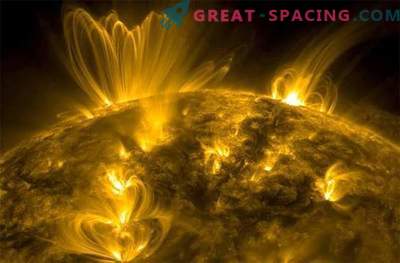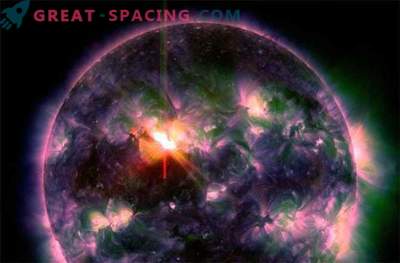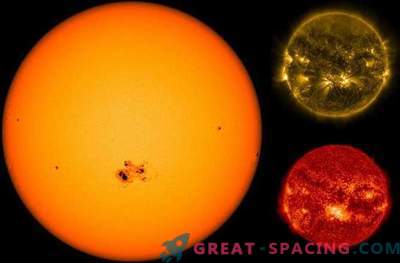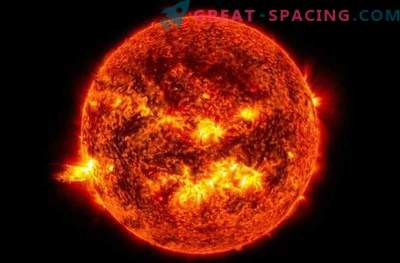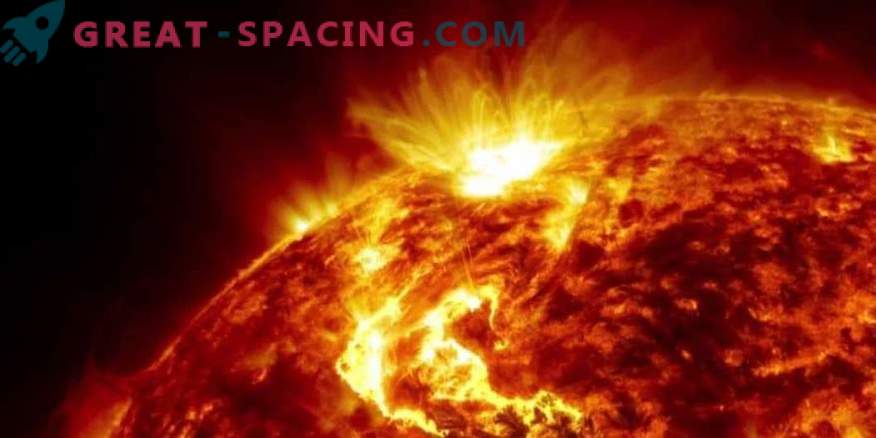
A team of scientists led by Malcolm Dutt from the University of Northumbria (Newcastle) has taken a new step in the study of the 30-year puzzle of the solar flare formation process.
To study our stars use different methods, including the study of the H-alpha line in the solar spectrum. It has a bond with gaseous hydrogen (it makes up the main mass of the star). The wavelength of this line changes due to the Doppler effect, where the light emitted from the gas becomes bluer if the gas approaches us, and redder if it moves away (redshift).
The researchers looked closely at the outbreaks, the major events of surface explosions associated with the eruption of the coronal mass. It is these emissions that have a negative effect on space weather, creating interference in communications and power supply.

The jet (blue arrow) exits the observed reference point (red outline). Structures correspond to models in terms of temperature, speed and time. It turned out that in the H-alpha rays, when viewed from the Earth, a powerful redshift is seen at a speed of 50-55 km / s. But when viewing space probes, a picture opens with a blue shift at a speed of 100 km / s.
Drutt was the first to create a model explaining this mysterious situation. For this purpose, radiation transfer and hydrodynamic modeling were used. Scientists have found that the responsibility for the H-alpha rays can be 10-second injection of solar energy particles. They explain the redshift and the formation of flares.
With solar flares, huge amounts of energy are released in the form of particles, rays, coronal mass, and interplanetary atmospheric shocks. Further investigation of the flare formation process will help to predict cosmic weather much better.

